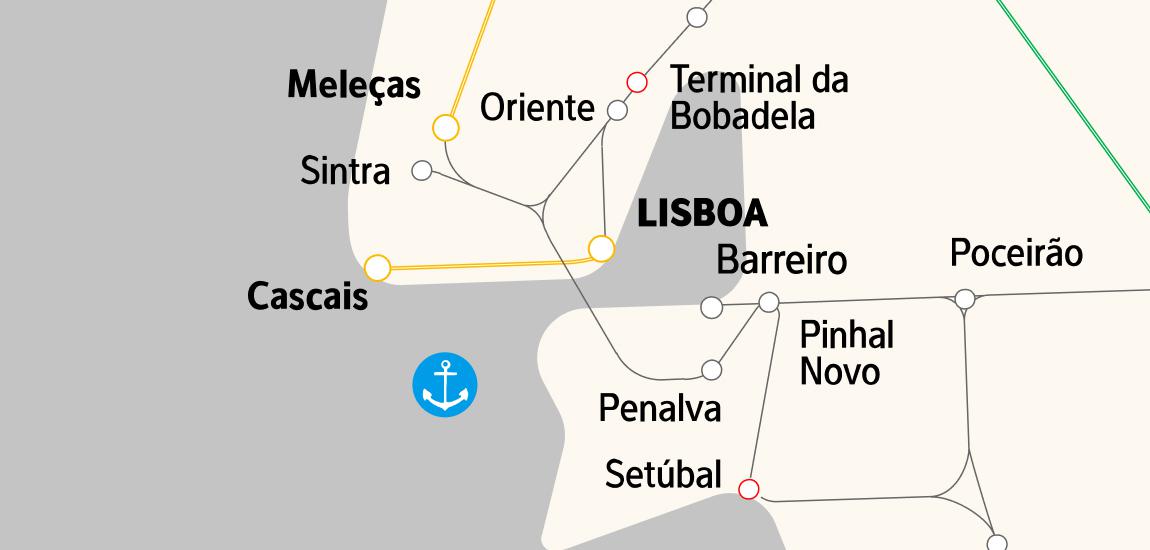Scope of Work
Overhead Contact Line and Traction Power - The electrification system (catenary) is to be migrated from the current 1,500 V DC to 25 kV-50Hz AC, which will allow savings of around 50 % in energy consumption.
Signaling - The installation of new signalling, together with the new catenary, will allow the operator to acquire new trains or place trains from the National Railway network in circulation, removing obsolete trains (some dating back to 1920).
The implementation of a speed control system such as the European Train Control System (ETCS), with Level 2, will allow higher levels of safety and rail channel availability to be achieved.
Rail Track - Work on the rail track to remodel the layout of Oeiras Station, improve access to the Carcavelos Stock Park and the installation of diagonal opposite direction crossing lines will allow greater flexibility in operations involving older equipment and enable maintenance and modernization work to take place. This will avoid the loss of passengers because of poor quality or reduced quantity of trains.
Telematic Rail - Work will be carried out on the Telematic Rail System on the Cascais Line, providing improved quality, safety and functionality of rail transport.
Stations and Secondary Stops - Work relating to stations and secondary stops will focus not only on improving accessibility to platforms, comfort and the quality of service provided, but also on reinforcing safety and increasing the energy efficiency of facilities.
Level Crossings at Stations/Secondary Stops (ATV) - To eliminate limitations and risks associated with a number of crossings between passenger platforms, thus improving the safety of rail operations and passengers as well as mobility, planned work also involves the removal of three ATV. Special attention has been paid to persons with reduced mobility.
Benefits
-
Energy savings of around 1,850 Tep by 2024, as a result of increased energy efficiency in train operation
(around 46 % lower energy consumption);
-
Reduction of around 4,960 TonCO2 by 2024 in the annual estimate for greenhouse gas emissions, based on the
forecast that due to the improvement in rail services, users of individual transport would start using rail.
Community Funding


